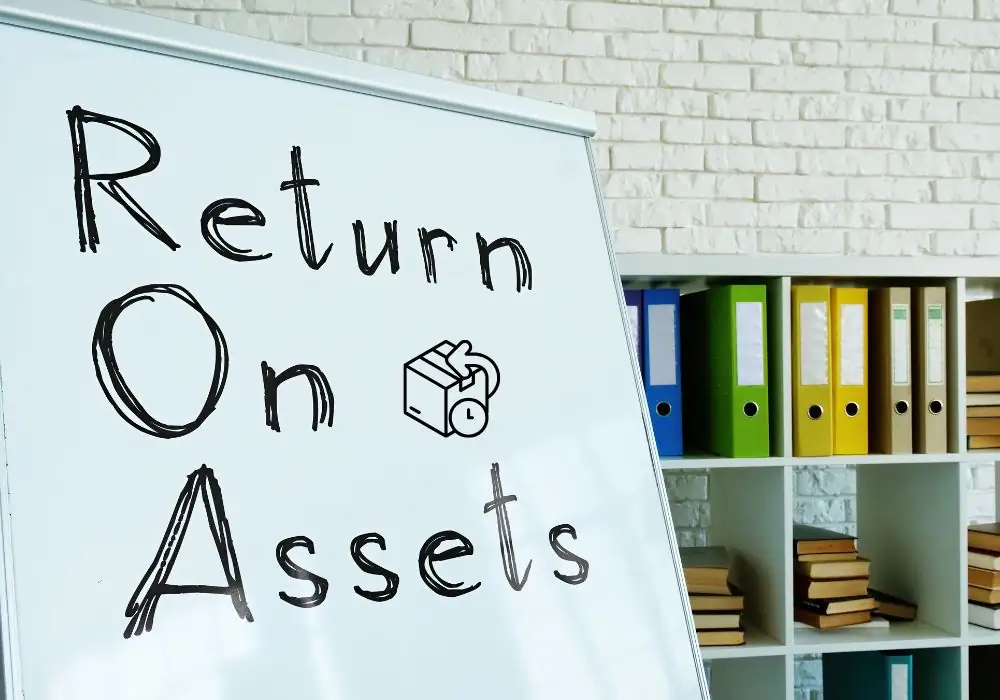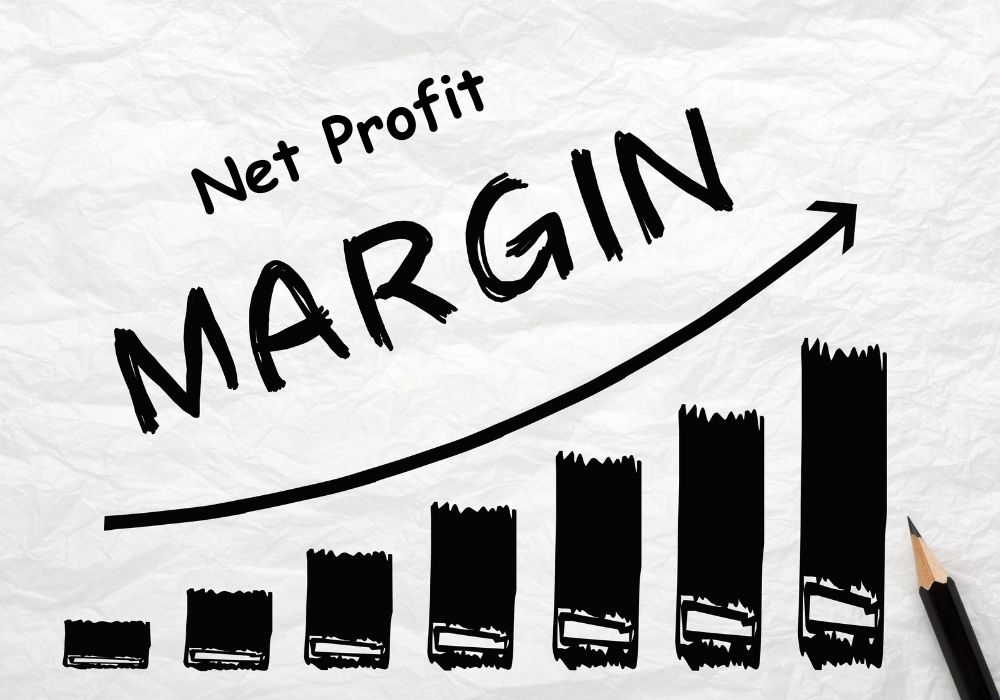- The ROA Formula
- Why ROA Matters
- How To Calculate ROA (Step-by-Step)
- Using Average Total Assets
- Why ROA Varies Across Businesses
- What Affects ROA?
- ROA Examples
- Comparing ROA Over Time
- ROA Limitations
- How to Improve ROA
- Tools for Calculating ROA
- ROA vs. Other Metrics
- Wrapping Up
- FAQs
- What’s the Difference Between ROA and ROE?
- How Often Should You Calculate ROA?
- What’s a Good ROA?
- Can ROA Be Negative?
- How Does Depreciation Affect ROA?
You can think of Return on Assets, or ROA, as a way to check how well a business makes money using its stuff, like laptops, trucks, or tools.
It’s not only about seeing the cash you’re earning, but also about making sure those things are doing their job. Calculating ROA shows if your gear is helping you profit or just sitting there.
You can use it to compare businesses or track your own projects, but you have to nail the math to get the full picture.
Years ago, figuring out ROA for a small project felt like solving a math puzzle with a deadline looming. Numbers on spreadsheets looked like a jumbled mess, but once it made sense, managing money got way easier.
In this article, I’ll explain ROA, show you how to calculate it with examples, and why it’s great for budgeting or picking investments.
The ROA Formula
ROA is a number that tells you how much profit you get from every dollar of stuff a business owns. It shows how good a company is at turning things like equipment or cash into money. Here’s the easy formula:
ROA = (Net Income / Total Assets) × 100
- Net Income: This is the money left after paying all costs, like taxes or supplies. It’s what the business keeps.
- Total Assets: This is everything the company owns—think computers, vehicles, or even money in the bank.
You can find these numbers in a business’s reports. Say a small store makes $10,000 in net income and owns $50,000 in assets.
Do the math: ($10,000 / $50,000) × 100 = 20%. That means every dollar of assets makes 20 cents in profit. Pretty cool, huh?
Why ROA Matters
ROA is like a score for how well a business uses its assets to make money. A high ROA means it’s doing great, getting lots of profit from its stuff.
A low ROA might mean the gear isn’t working hard enough. You can use ROA to see how one company compares to another or check if your own business is getting better.
But here’s the thing: ROA looks different depending on the business. A tech company with less assets might have a higher ROA than a factory with tons of machines. Comparing them is like comparing a bike to a bulldozer—they’re just not the same.
How To Calculate ROA (Step-by-Step)
Let’s make ROA super simple with an example. Imagine you’ve got a delivery business. Last year, you made $15,000 in profit, and your assets (vans, phones, cash) is worth $75,000.
- Find Net Income: Check the income statement. Here, it’s $15,000.
- Find Total Assets: Look at the balance sheet. Total assets are $75,000.
- Do the Math: Divide profit by assets, then multiply by 100. So, ($15,000 / $75,000) × 100 = 20%. Your ROA is 20%.
This 20% means your delivery service earns 20 cents of profit for every dollar of assets. Not bad! You can use this to see if buying a new van will boost profits or just add costs.
Using Average Total Assets
Sometimes, businesses use average total assets to make ROA more accurate, especially if things change a lot. Average total assets = (Beginning Assets + Ending Assets) / 2. If your delivery service had $70,000 in stuff at the start and $80,000 at the end, the average is ($70,000 + $80,000) / 2 = $75,000. Then calculate ROA the same way. This keeps things smooth if you add or sell assets.
Calculating ROA for a small project once showed that extra gear wasn’t helping. Using average assets made the numbers clearer, making planning easier. You can try this—just grab the numbers from your reports.
Why ROA Varies Across Businesses
ROA isn’t one-size-fits-all. Different industries have different asset needs, so their ROA numbers look different. A tech company with $1 million in assets and $200,000 in net income has an ROA of 20%. A factory with $10 million in heavy equipment and $500,000 in net income? That’s only 5%. The tech company looks better, but factories need more assets to operate, so lower ROA is normal.
You should compare ROA within the same industry. If you’re running a café, check other cafés’ ROA to see how you stack up. A low ROA might mean you’re not using your ovens or tables efficiently, while a high ROA shows you’re getting the most out of every dollar spent.
What Affects ROA?
Several things can change ROA. High expenses, like repairs or taxes, cut into net income, lowering ROA. Buying too many assets—like extra delivery vans you don’t need—can also tank it. On the flip side, boosting sales without adding assets raises ROA. Streamlining operations, like renting out unused equipment, can help too.
ROA Examples
Let’s look at two examples to make ROA crystal clear.
Game Store
A store selling games makes $8,000 in net income and has $40,000 in assets (games, shelves, cash). ROA = ($8,000 / $40,000) × 100 = 20%. That’s a good score, showing the store makes 20 cents per dollar of assets. Want a new display? ROA helps you decide if it’s worth it.
YouTuber
A YouTuber earns $5,000 in net income with $25,000 in assets (camera, lights, software). ROA = ($5,000 / $25,000) × 100 = 20%. Same ROA as the store, but with less stuff. It shows the gear is working hard, but a new camera needs to make more money to keep ROA high.
These examples show ROA’s strength—it’s about making sure your assets earns money. You can use it to decide if new gear is a good buy.
Comparing ROA Over Time
Tracking ROA year after year shows if a business is getting better at using assets. If your ROA jumps from 15% to 20%, you’re doing something right—maybe selling more without buying extra stuff. If it drops, it’s time to check what’s dragging profits down, like old equipment that needs replacing.
In a past project, watching ROA drop after buying new machines sparked a rethink. Selling off unused gear boosted ROA back up. You can do this too—just keep an eye on trends to spot problems early.
ROA Limitations
ROA is awesome, but it’s not perfect. It doesn’t show everything about a business’s health. For example:
- Debt Ignores: ROA doesn’t account for loans. A company with high debt might look great on ROA but struggle with payments.
- Asset Valuation: Old assets might be undervalued on the books, inflating ROA. New assets can lower it until they start earning.
- Industry Differences: As mentioned, comparing ROA across industries can mislead you.
You need to pair ROA with other metrics, like Return on Equity (ROE) or profit margins, for a fuller picture. Don’t just rely on one number—think of it as one piece of the puzzle.
How to Improve ROA
Want a better ROA? Here are some tips:
- Boost Net Income: Cut unnecessary costs or increase sales. For example, a café could offer delivery to raise revenue without new assets.
- Use Assets Better: Rent out unused equipment or sell what’s not needed. A delivery service might lease idle vans.
- Avoid Overbuying: Only invest in assets that will earn more profit. Before buying a new computer, make sure it’ll bring in more work.
In a small office setup, cutting back on extra printers and focusing on high-profit projects lifted ROA noticeably. You can try similar tweaks—start small and track the results.
Tools for Calculating ROA
You don’t need fancy software to calculate ROA. A simple spreadsheet works:
- Pull net income from your income statement.
- Grab total assets (or average assets) from your balance sheet.
- Divide, multiply by 100, and you’re done.
Apps like QuickBooks or Excel can automate this, pulling data directly from your records. You can also check public companies’ ROA in their annual reports online to compare.
ROA vs. Other Metrics
ROA isn’t the only way to measure performance. Here’s how it stacks up:
- Return on Equity (ROE): Measures profit from shareholders’ money, not assets. Good for investors, but less about operations.
- Profit Margin: Shows how much profit comes from sales, ignoring assets. Great for pricing decisions.
- Return on Investment (ROI): Looks at specific projects, not the whole business. Use it for one-off purchases.
ROA shines for checking overall asset efficiency, but combining it with these gives a clearer view. You can mix them to make smarter choices, whether running a business or investing.
Wrapping Up
ROA turns numbers into a clear way to see how well assets make money. Early struggles with financial metrics taught patience, turning confusion into a tool for better planning.
The advice now? Start simple, track ROA over time, and use it to guide decisions. You’ve got this metric—use it to keep your finances on point.
FAQs
What’s the Difference Between ROA and ROE?
ROA shows how well assets make profit, while ROE looks at profit from shareholders’ money. Use ROA for operations, ROE for investor returns.
How Often Should You Calculate ROA?
Check it yearly to track trends, or quarterly for faster insights. Regular checks help spot issues early.
What’s a Good ROA?
It depends on the industry. Tech firms might hit 15-20%, while factories might be 5-10%. Compare to similar businesses for context.
Can ROA Be Negative?
Yes, if a company loses money (negative net income). It means assets aren’t earning—they’re costing more than they bring in.
How Does Depreciation Affect ROA?
Depreciation lowers asset values, which can raise ROA if profits stay steady. But it also cuts net income, so balance matters.







